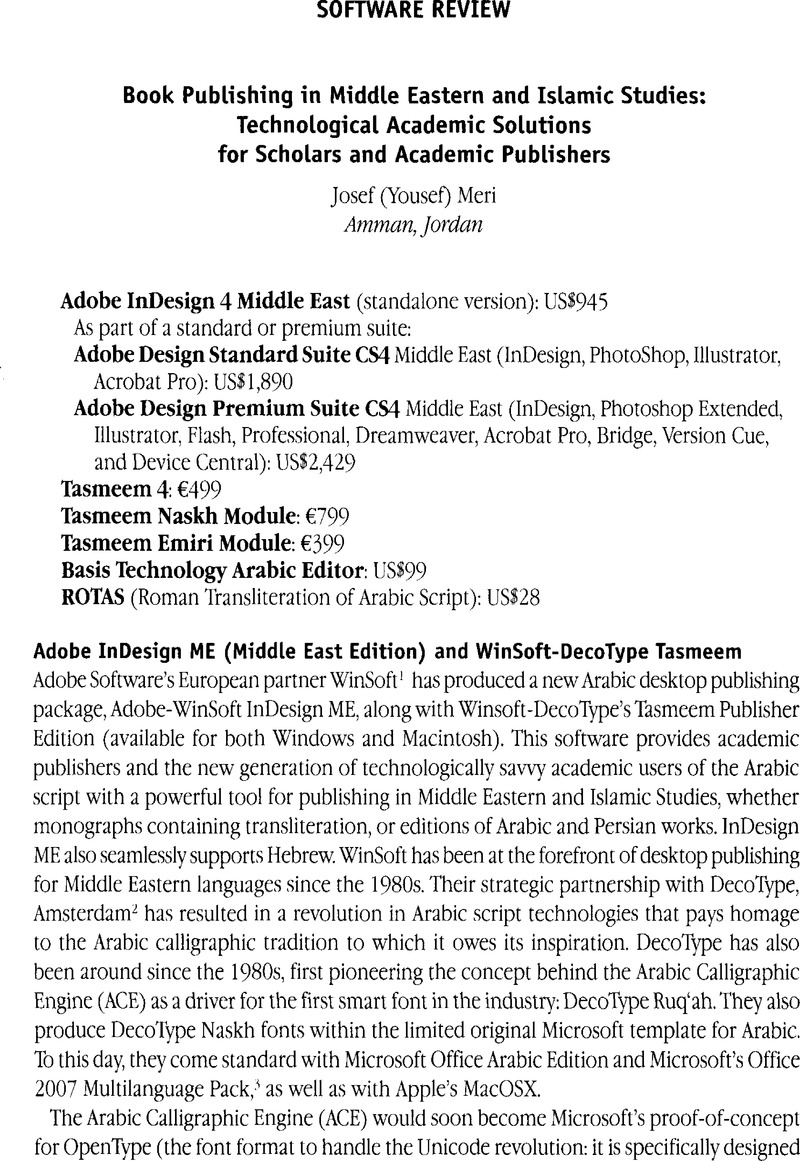No CrossRef data available.
Published online by Cambridge University Press: 09 March 2016

4 See the slightly dated discussion of OpenType and Unicode support for desktop publishing by Meri, J.W., “Software and Technology Review: Multilingual Computing in Middle East Studies,” Middle East Studies Association Bulletin, 34 (2000): http://w3fp.arizona.edu/mesassoc/Bulletin/meri%20software.htmGoogle Scholar, and the more recent Wikipedia entry, “OpenType”, http://en.wikipedia.org/wiki/OpenType. For a more detailed discussion of OpenType fonts, see Hudson, John, “Windows Glyph Processing: An OpenType Primer,” http://www.microsoft.com/typography/Glyph%20Processing/intro.mspx.Google Scholar
6 On the Macintosh see Vikor, Knut, “The Arabic Macintosh: an Informal Resource Centre,” http://www.hf.uib.no/smi/ksv/arabhome.html.Google Scholar
9 A ridiculous aspect of the present state-of-the-art is that non-trivial Arabic words like Allah and Islam are routinely mis-rendered in practically all Arabic computer fonts. See Milo, Thomas, “Computing and the Qur’an,” in Schlaglichter, die beiden ersten islamiscbenjahrbunderte, GroS, Markus and Ohlig, Karl-Heinz, eds. (Berlin, 2008).Google Scholar
18 Mulder, Eildert, “Keyboard Calligraphy,” Saudi Aramco World 58 (2007), pp. 34–39, http://www.saudiaramcoworld.com/issue/200704/keyboard.calligraphy.htm.Google Scholar
19 Remarks from an unpublished conference paper.